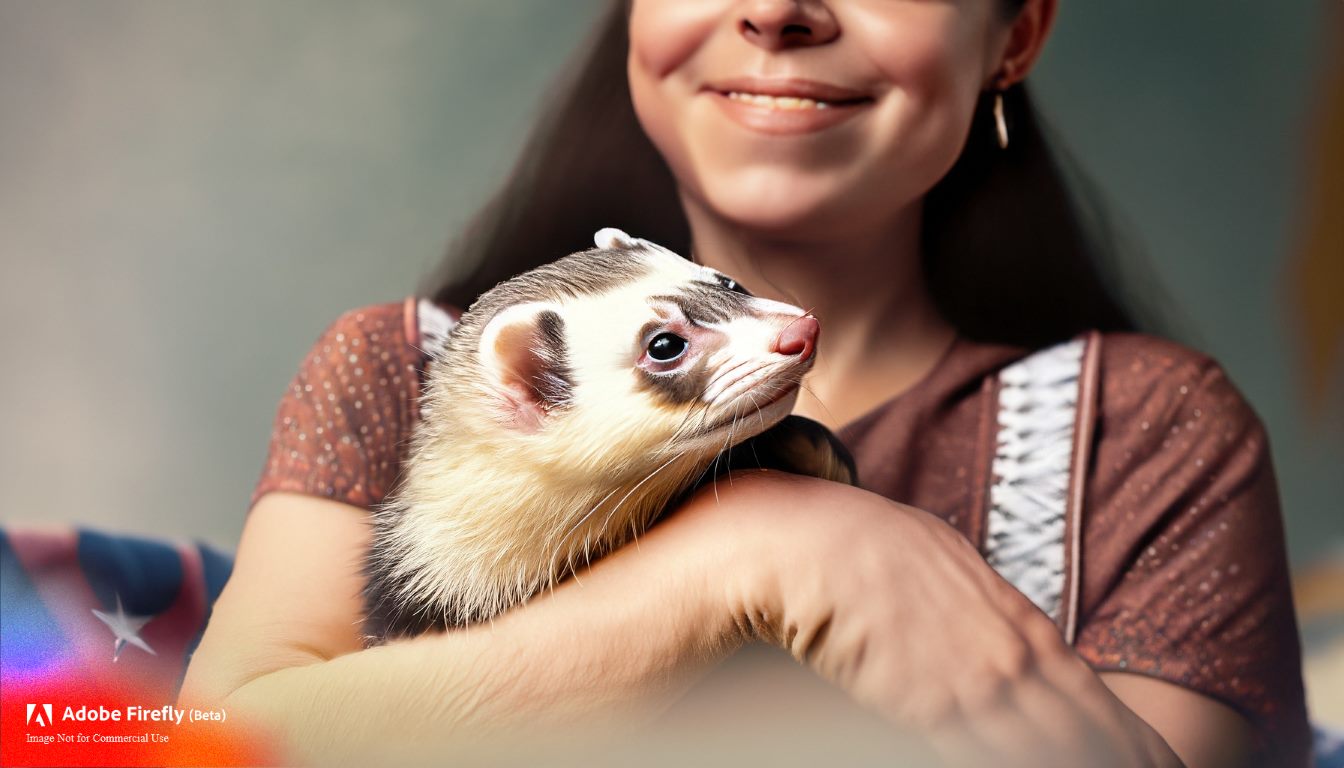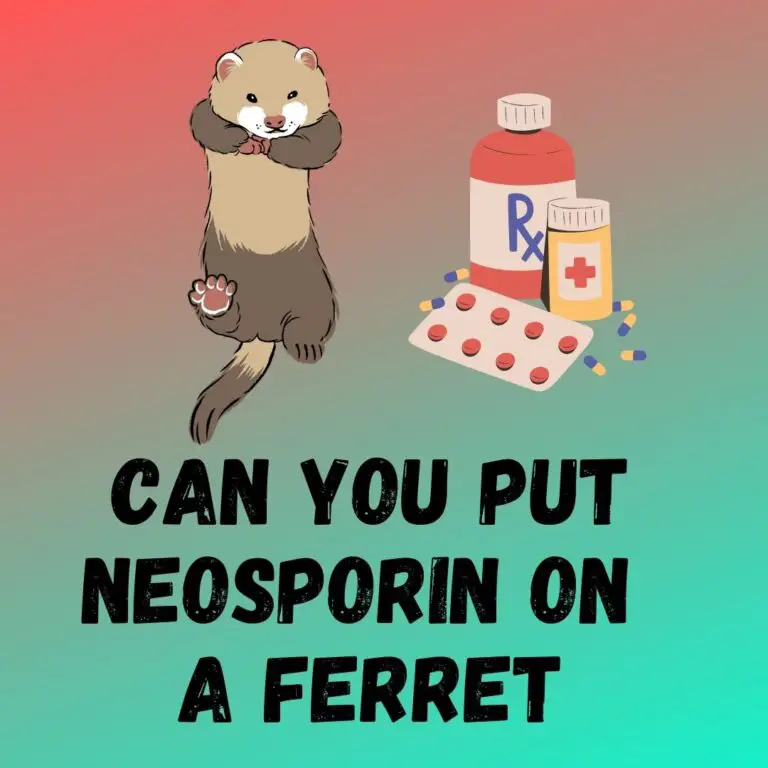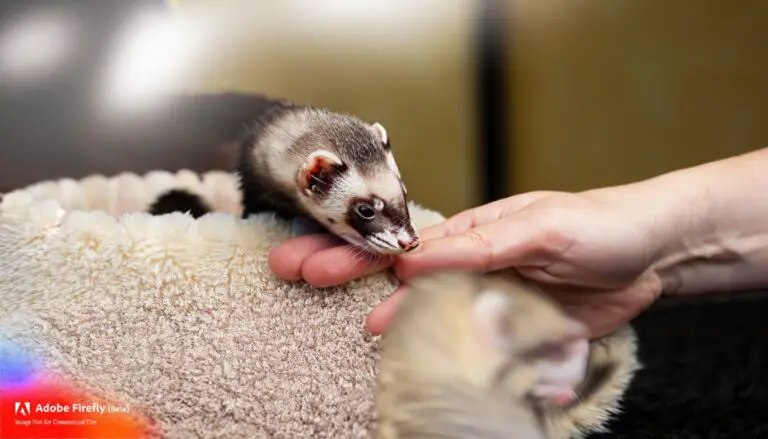
You probably know that ferrets are very social animals. Like potato chips, you can’t have just one. So, what about breeding ferrets? Is that something you should try? Before you try to set up your hob and your jill on a blind date, it’s a good idea to learn about what you’re in for.
It is imperative to know that breeding ferrets is not for the amateur. You should be aware that breeding is very risky for a jill (a female ferret) and her young: Not only is the mating process rather aggressive, many jills have a difficult time during the birth process. After the birth, their teats can become infected. Likewise, many of the kits also do not survive the birth. Breeding ferrets is best left to those who have extensive experience and knowledge about the whole “business”. Don’t try to breed them just because “baby ferrets are so cute.”

Breeding ferrets, as with humans, is a matter of timing. Jills come into heat (i.e., are able to breed) from two to five times a year. That’s because their breeding period depends on the amount of daylight available. (Artificial lighting can help lengthen the breeding season.) You can tell if your jill is in heat because her vulva will become very swollen.
Hobs (unaltered male ferrets) usually are in rut for about three months. You will know they are in rut as their scent becomes quite strong. They also tend to mark territory with a combination of oil and urine and drag their torsos across things.
Once your jill is in heat and your hob is in rut, the actual mating process is fairly easy to arrange. If you are sure you’re ready to handle the consequences, put the jill into the hob’s territory and wait for them to do what comes naturally. (The process will take several hours perhaps even a full day, with several sessions interrupted by food, drinks and cleaning.)
If you have not encountered breeding ferrets before, be aware that ferret breeding is not all soft lights and romantic music. In fact, there is nothing romantic about it. Usually, the hob will grab the jill by the neck, instinctively biting it to release a hormone that promotes the release of the jill’s eggs. Then he usually drags the jill around the cage and mounts her. The jill goes limp and allows it, even though she does usually scream.
Relax. Don’t even think of pulling them away from each other. The hob’s penis is hooked shaped, making separation from the jill virtually impossible. If you really want to be sure no one got hurt, you can always check them for cuts and abrasions in a day or two.
If the session was a success, you will soon see the jill gaining weight and beginning to nest. She will pull fur out of her tail and body, perhaps as a way to prepare herself for birth. A ferret pregnancy lasts about 42 days.
If the mating session was not successful, you may need to mate your jill again. That’s because a jill in heat needs to mate or else it could adversely affect her health. The jill in heat does not produce enough white blood cells in order to fight off infections. Yet, because of the very rough mating process, the jill is more prone to infections, which can be deadly. That’s why ferret experts strongly recommend spaying and neutering both hobs and jills.
At the end of 42 days, the jill will give birth to several kits that are hairless, blind and deaf. There is nothing you really need to do during and after the birth, except to give the jill plenty of privacy. (Jills who are disturbed during this crucial time have been known to eat their young.) Do not even change the bedding other than to check for neglected kits. (Yes, the cage will get smelly, so provide plenty of air circulation in the room.) Even feeding the jill will be a challenge, so add food and water when she is distracted.
In about a week, you will be able to gently handle the kits if you are cautious. Do not handle them while they are feeding and only handle the kits for a few moments at first. Remember that kits are blind for the first three weeks of life. You’ll know they can see when they start exploring their cage and taking an interest in mom’s food bowl.
At this point, you can start your kits on human baby food, progressing to softened kitten food and then dry food. When they first start eating, make sure the food is very liquid then progress gradually to harder foods until they are ready for solid food at about six weeks, around the time their canine teeth appear.
If you’re breeding ferrets with an eye toward selling them, you should know kits are not ready to leave their mother for about 12 weeks after birth.
Again, it’s important to be very familiar with ferrets before you take on the task of breeding them. However, with care, you will soon have a whole new brood of fuzzies to love.






